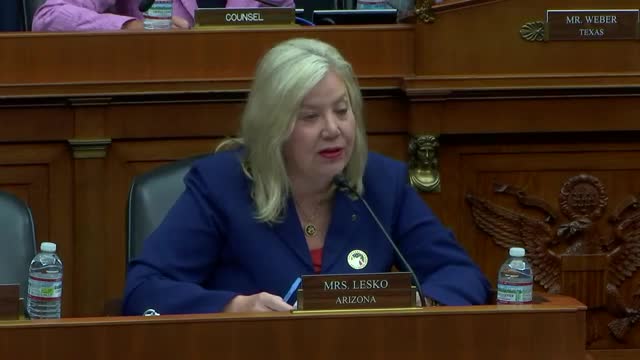Nuclear energy faces critical review amid rising demand
July 24, 2024 | Energy and Commerce: House Committee, Standing Committees - House & Senate, Congressional Hearings Compilation

This article was created by AI summarizing key points discussed. AI makes mistakes, so for full details and context, please refer to the video of the full meeting. Please report any errors so we can fix them. Report an error »

During a recent government meeting, key discussions centered around the status of nuclear energy applications and the need for efficient regulatory processes to meet rising energy demands in the United States. The Nuclear Regulatory Commission (NRC) confirmed that an application for a new reactor is currently under review, with a projected timeline of 27 months for completion. This review is being conducted alongside 13 topical reports that address various technical aspects of the reactor.
Congresswoman Castro highlighted the importance of the bipartisan Advanced Act, signed into law by President Biden, which she described as a significant step for clean energy in the U.S. She emphasized the growing demand for energy, driven by a booming economy and advancements in technology, predicting an annual growth rate of 5 to 6% through the end of the decade. Castro urged a shift towards cleaner energy technologies rather than reverting to traditional fossil fuels.
Commissioner Caputo expressed concerns about the NRC's preparedness for an influx of applications, noting the need for advance notice from applicants to ensure the agency is adequately resourced. He stressed the importance of pre-application engagement to enhance the quality of submissions.
The meeting also addressed the integration of technology, particularly artificial intelligence, into the NRC's licensing and permitting processes. Chair Hanson indicated that the agency is exploring AI use cases to improve efficiency while maintaining safety standards. However, he cautioned that the NRC must proceed carefully to ensure the accuracy and security of these technologies.
Additionally, Congressman Weber discussed the Modernized Nuclear Reactor Environmental Reviews Act, which aims to streamline the environmental review process for new reactors. The NRC is currently implementing reforms, including a generic environmental impact statement and expanding categorical exclusions to expedite reviews.
Overall, the discussions underscored the critical role of nuclear energy in the U.S. energy portfolio and the necessity for regulatory reforms to support the transition to cleaner energy sources amidst increasing demand.
Congresswoman Castro highlighted the importance of the bipartisan Advanced Act, signed into law by President Biden, which she described as a significant step for clean energy in the U.S. She emphasized the growing demand for energy, driven by a booming economy and advancements in technology, predicting an annual growth rate of 5 to 6% through the end of the decade. Castro urged a shift towards cleaner energy technologies rather than reverting to traditional fossil fuels.
Commissioner Caputo expressed concerns about the NRC's preparedness for an influx of applications, noting the need for advance notice from applicants to ensure the agency is adequately resourced. He stressed the importance of pre-application engagement to enhance the quality of submissions.
The meeting also addressed the integration of technology, particularly artificial intelligence, into the NRC's licensing and permitting processes. Chair Hanson indicated that the agency is exploring AI use cases to improve efficiency while maintaining safety standards. However, he cautioned that the NRC must proceed carefully to ensure the accuracy and security of these technologies.
Additionally, Congressman Weber discussed the Modernized Nuclear Reactor Environmental Reviews Act, which aims to streamline the environmental review process for new reactors. The NRC is currently implementing reforms, including a generic environmental impact statement and expanding categorical exclusions to expedite reviews.
Overall, the discussions underscored the critical role of nuclear energy in the U.S. energy portfolio and the necessity for regulatory reforms to support the transition to cleaner energy sources amidst increasing demand.
View full meeting
This article is based on a recent meeting—watch the full video and explore the complete transcript for deeper insights into the discussion.
View full meeting